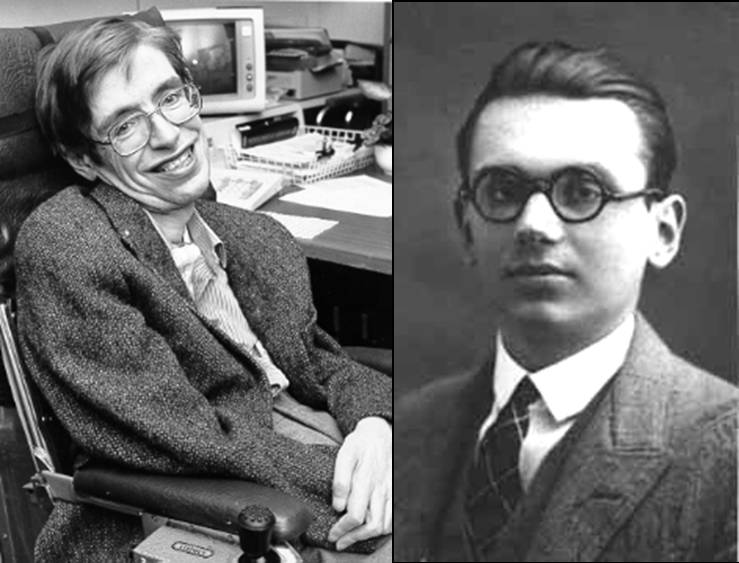Stephen Hawking vs Gödel

In 1980, Professor Stephen Hawking gave an inaugural lecture on taking up the Lucasian Professorship of Mathematics in Cambridge University. It was to be a further 20 years before he referred to Gödel’s Incompleteness Theorem as key to the Theory of Everything (TOE). He is famously reported as having said in the lecture, which was entitled Is the end in sight for theoretical physics?, that he believed that a TOE would be found before the end of the century.
(As an aside, he only discussed the possibility in that lecture, although, in 1998, he, himself, endorsed these reports in a lecture entitled A unified theory of everything – stating that in 1980 he had said there was a 50-50 chance of a TOE being found before 2000. Even as late as 1998, though, he had still made no mention of Gödel. It was not until 2002 that Hawking first referred to Gödel in Gödel and the end of physics.)
Why was his omission so remarkable? In order to answer that, it is necessary first to understand two different interpretations of what a TOE might look like. The conventional, most widely accepted picture is confined to a statement of the fundamental laws which explain the four basic interactions (electromagnetism, the weak interaction, the strong interaction and gravitation) along with other phenomena whose existence may in due course be verified, such as the inflationary force, dark energy and dark matter.
A more fundamental picture of a TOE, however, is an all-encompassing one, which would not only include a logical derivation of the fundamental laws from a set of root mathematical axioms but which would extend this logical derivation to every possible phenomenon in the universe. In other words, every phenomenon in the universe is a mathematical statement.
(This would even include emergent phenomena, no matter how complex. In many cases of emergent phenomena, the simplest derivation might be just to “run the program” of the underlying rules, which are themselves logically deduced from the root axioms, in much the same way that the complexity of the Mandelbrot image may best be demonstrated by iterating the basic formula rather than trying to describe it in any other way. Many such examples are to be found – for instance, among biological phenomena. While such demonstrations may not lead to easy understanding, the very fact that emergent phenomena may be successfully reproduced would be a demonstration that no additions to the theory would be necessary.)
It is this latter, fundamental, all-encompassing definition of the TOE that is used in Lucy and David and the God Equation, and also, it seems, by Professor Hawking, as evidenced by his including the Goldbach conjecture formulated as a physical problem – in terms of wooden blocks – as part of “the theory of the universe”.
However, the root mathematical axioms from which the fundamental TOE is supposed to be derived will constitute a mathematical system at least as complex as basic number theory. Therefore Gödel’s Incompleteness Theorem may be applied to that set of axioms and will show that the mathematical system is either inconsistent, ie, the mathematics can sometimes contradict itself, or that it is incomplete, ie, there are some true statements of the mathematics – manifest as phenomena in our universe – which cannot be deduced from the root axioms and, therefore, which cannot be predicted from the TOE either, since it is, itself, derived from the root axioms.
Assuming that the universe is rational (thereby discarding the option of mathematical inconsistency), this means that the mathematical system is incomplete – there will be some true mathematical statements which cannot be deduced from the root axioms. This means that there will be some phenomena which a TOE derived from the root axioms is incapable of predicting.
The fact that a TOE derived from the root axioms of the type envisaged by Professor Hawking is incapable of predicting all the phenomena in the universe surely deserved a comment!
Why, then, did Professor Hawking omit to mention Gödel? This has been the source of much speculation, including a suggestion that he, and many of his contemporaries, were simply either unaware of the theorem or of its significance (see, for example, Professor Stanley Jaki.)
When, in 2002, “it finally dawned on Hawking”, as Professor Jaki puts it, that Gödel’s Incompleteness Theorem rules out a TOE which can be derived from the root axioms and which explains everything, he focused on M-theory as the best candidate for a theory that will account for the known fundamental forces and matter.
In The Grand Design, co-authored with Professor Leonard Mlodinow, again, no mention is made of Gödel, although this is less surprising if M-theory is regarded as a “conventional” TOE, which does not attempt to explain all phenomena.
However, there is a final twist to the tale. While Gödel’s Incompleteness Theorem shows that an all-encompassing TOE, which predicts all phenomena, cannot be derived from the root axioms, it is nevertheless true that a TOE which does predict all phenomena could, in principle, be written down without deriving it. It would simply not be possible to prove, in this universe, that what had been written down was, indeed, the genuine TOE. This, and other aspects of the TOE, are discussed in Lucy and David and the God Equation.
Save
